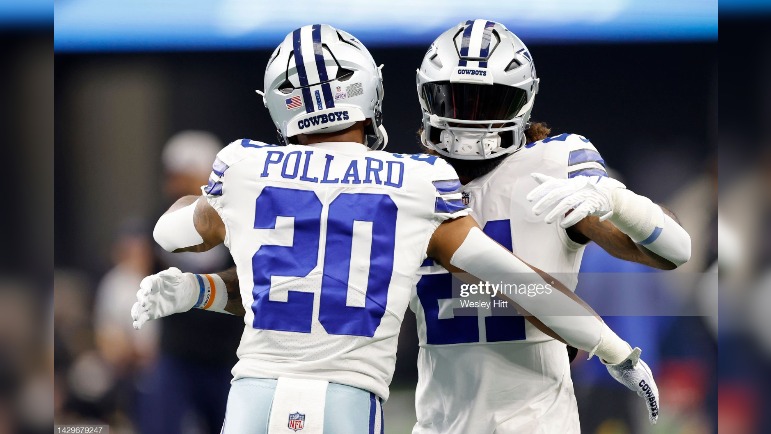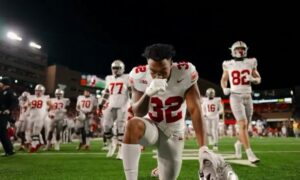After Pittsburgh Steelers RB Jaylen Warren ripped off a 62-yard TD run this past weekend against the Buffalo Bills, you knew that the chatter would start to pick up regarding his role in the offense compared to RB Najee Harris.
Warren burst onto the scene as an undrafted free agent last season, totaling 105 touches for 593 scrimmage yards and one TD while averaging an eye-popping 4.9 yards per carry. Warren got more run as the season wore on, displaying more burst and explosiveness as a runner than Harris, who was still working through a foot injury that hampered him during the first half of the season. Still, the two formed a dynamic duo in the backfield, becoming the offense’s identity down the stretch as Pittsburgh rattled off seven wins in its last nine games, embracing a run-heavy offensive attack.
While watching the dynamic of Harris and Warren unfold in Pittsburgh’s backfield, another backfield situation came to mind that has several similarities: the 2022 Dallas Cowboys.
Last season, the combo of RBs Ezekiel Elliott and Tony Pollard headlined the Cowboys’ rushing attack, producing two productive rushers. The Cowboys totaled 2,298 rushing yards last season, ranking ninth in the NFL along with accumulating 24 rushing touchdowns, which ranked second in the league. While Elliott was recognized as the team’s lead back, it was Pollard who was the most productive back in Dallas last season, carrying the ball 193 times for 1,007 yards (5.2 YPC) and nine touchdowns while adding in 39 receptions for 371 yards and three scores. Elliott carried the ball 231 times for 876 yards (3.8 YPC) and 12 touchdowns. He also had 17 receptions for 92 yards on the year.
While yards per carry isn’t a sticky stat, it is interesting to see the parallels between Elliott (3.8 YPC and Harris (3.8 YPC) and Pollard (5.2 YPC) and Warren (4.9 YPC). Warren is like Pollard as that more explosive back with better burst in the open field while Harris is like Elliott as that bigger back who is stronger between the tackles and in short-yardage situations. Both Harris and Elliott are former first-round picks, being highly coveted backs coming out of college as the first runners taken in their respective draft classes. Meanwhile, Pollard was drafted in the fourth round back in 2019 to be more of a change-of-pace back while Warren was a UDFA merely competing for a spot on the roster last season.
While Warren may be more explosive of a runner than Harris, that shouldn’t mean that he should become Pittsburgh’s lead runner. Harris has an important role as the team covets as a downhill runner who wears down opposing defenses while having the skill set to contribute to the passing game as a receiver and pass protector as well. Still, Warren is a skilled pass catcher himself an operated at Pittsburgh’s third-down back for a good portion of the 2022 season. Displaying reliability in pass protection, he also provided the Steelers another pass-catching option out of the backfield.
I don’t foresee a complete changing of the guard in Pittsburgh’s backfield like we saw in Dallas last season. However, I do think that Pittsburgh should consider giving Warren more opportunities in his second season like Dallas did with Pollard in 2022. The Steelers could stand to have more explosive plays out of their backfield this season, and while Harris’ role is valuable, keeping him fresh for the second half of football games may be the best thing for him and his career rather than racking up 400 touches a season.
Should Warren receive more touches in 2023, I do think Pittsburgh could have a similar backfield situation to what Dallas had last season between Elliott and Pollard. That isn’t to say that Warren is as explosive as Pollard or that Harris is as run down as Elliott showed last season. Rather, the two Steelers running backs can truly operate in that “thunder and lightning” role like Elliott and Pollard did last season for the Cowboys.








